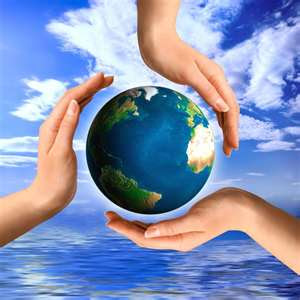Coral reefs boast some of the richest in biodiversity on the planet. Coral reefs cover an area of over 280,000 km2 and support thousands of species in what many describe as the “rainforest's of the seas”.
Coral reefs benefit the environment and people in numerous ways. For example, they;
- Protect shores from the impact of waves and from storms;
- Provide benefits to humans in the form of food and medicine;
- Provide economic benefits to local communities from tourism.
The World Meteorological Organization says that tropical coral reefs yield more than US$ 30 billion annually in global goods and services  , such as coastline protection, tourism and food.
, such as coastline protection, tourism and food.
The US agency NOAA (the National Oceanic and Atmospheric Administration) puts the economic value even higher and says that coral provide economic services, jobs food and tourism--estimated to be worth as much as $375bilion each year.1
At some point we are benefiting from it. We are not just blessed to have this beautiful scenery but also thankful to have this as part of our nature. It is good to see those colourful coral reefs as we see ourselves blessed and thankful to have a colorful life.
In the past few years, however, global threats to coral reefs have been increasing and in the context of the wider environment, the value of coral reefs may be even greater:
''Ecologically speaking the value of coral reefs is even greater [than these estimates] because they are integral to the well being of the oceans as we know them. … picture [reefs] as the undersea equivalent of rainforest trees. Tropical waters are naturally low in nutrients because the warm water limits nutrients essential for life from welling up from the deep, which is why they are sometimes called a “marine desert”. Through the photosynthesis carried out by their algae, coral serve as a vital input of food into the tropical/sub-tropical marine food-chain, and assist in recycling the nutrients too. The reefs provide home and shelter to over 25% of fish in the ocean and up to two million marine species. They are also a nursery for the juvenile forms of many marine creatures.As we consider the conservation of our envronment in the land, we should always consider spicifically the marine life. We humans are not just the only existing creature in the world, we should consider all the creatures that we see in order for them to live normally as to the case of every human. Everything has its own value that all of us shoud consider to have an equal treatment in all the aspects of this world.
I could go on, but the similarity with the rain forest should now be clear. Eliminate the undersea “trees”, which mass coral bleaching is in the process of doing, and you’ll eliminate everything that depends on it for survival.''— Rob Painting, Coral: life’s a bleach… and then you die, Skeptical Science, January 13, 2011—2








